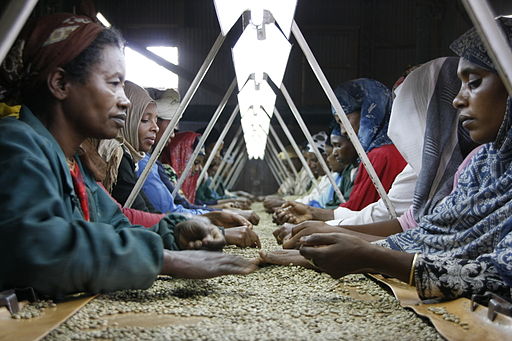Ethiopia Yirgacheffe Konga
Ethiopia Yirgacheffe Konga
The town of Konga lies in the heart of one of the world’s most intriguing coffee producing regions; Yirgacheffe in Ethiopia. This is the homeland of coffee, where the plant evolved, and as a result the amount of genetic diversity in the seedstock there is simply astounding. By some estimates there are over 300,000 distinct varietals of coffee in Ethiopia, dwarfing the mere hundreds of varietals grown across the rest of the world.
When coffee first left the horn of Africa in the 1500s it encountered what biologists call a “genetic bottleneck”. Only a few select plants made it into the hands of the European traders who then spread it to their colonies in the Americas and Asia. That meant that all of the coffee being grown outside of Africa was descended from only a few select plants, representing only a sliver of the diversity of the Arabica coffee growing in Ethiopia. Left behind were the hundreds of thousands of different types of Arabica, and they are still growing there today.
There are nearly no large coffee farms in Ethiopia, so every lot is made up of coffee from the many small farmers of that country. Most farmers only have a few acres of land producing coffee, accounting only a few hundred coffee shrubs. These farmers often take seeds from wild coffee plants, and replant them in their own small gardens, creating an immense amount of diversity in an extremely small area.

Despite its proximity to many other coffee producing micro-regions like Harfusa and Biloya, the coffees from around the town of Konga represent a unique subset of Yirgacheffe coffee. These handpicked cherries are taken to the Konga milling station where they are pulped, fermented, washed, and then dried on raised beds. The heterogeneous genetics of these heirloom plants and the care with which they are processed result in an amazingly clean and crisp cup with a pronounced citrus acidity reminiscent of lime juice, that is balanced by a prominent stone fruit sweetness, and a mouthfeel that is unusually thick for coffees from this region.
